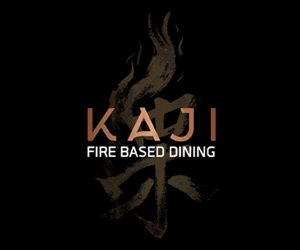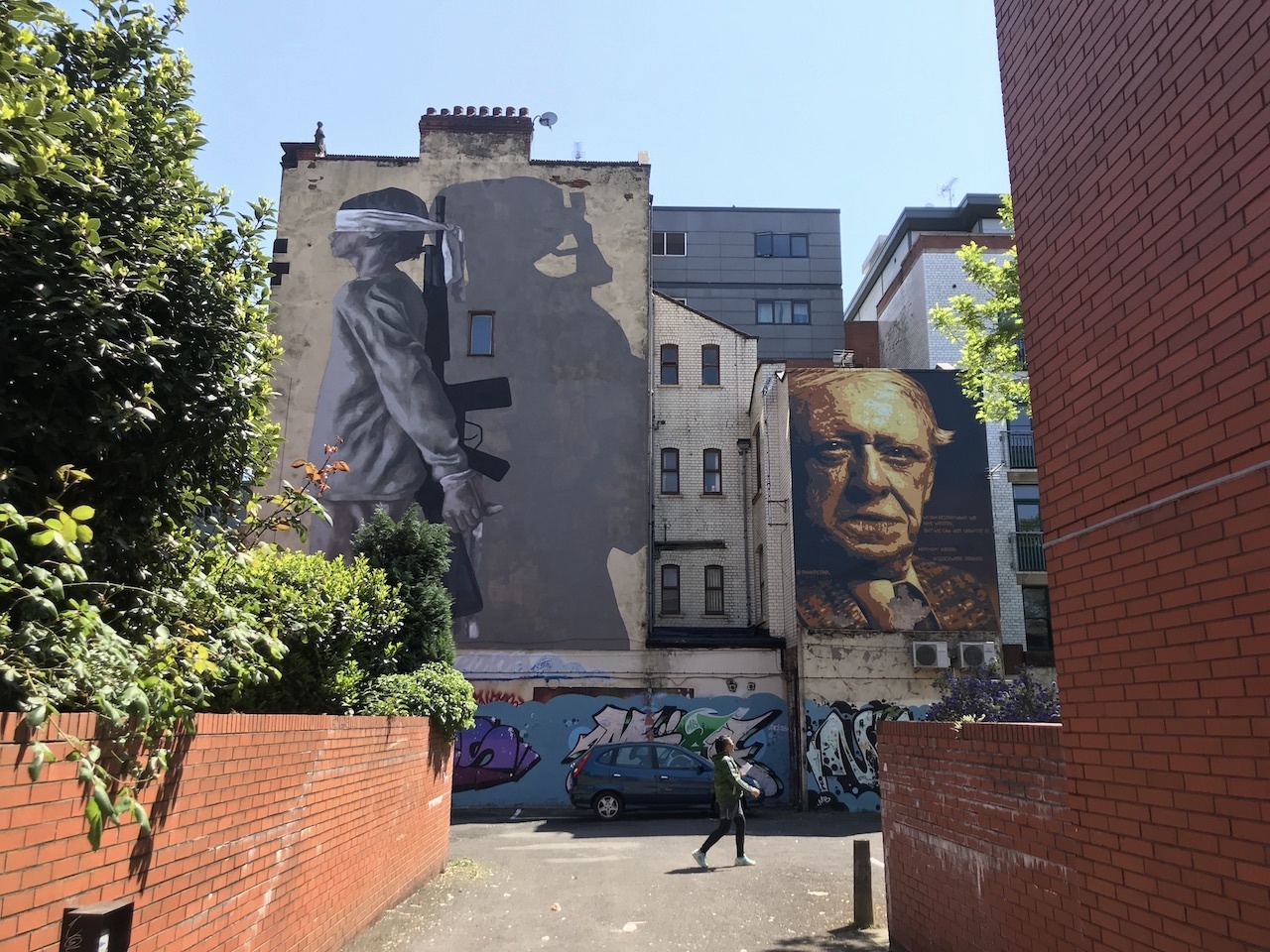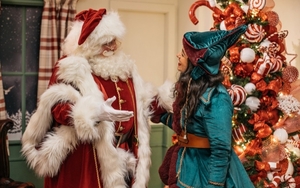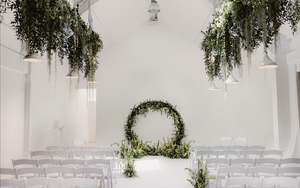Jonathan Schofield continues his stroll amongst factories, warehouses, canals and street art
This is the second part of the Northern Quarter and Ancoats alternative walking tour. The first part is here. The tour changes tone a couple of times on this stretch moving through epic industrial architecture that defined a new world back into the former market areas. Updated March 2023.
So continuing on from the previous tour, cross Oldham Street and turn left over the lights towards the Crown & Kettle pub. This has one of the most astonishing pub interiors around dating from an undetermined time in the 1840s or 50s. Huge Gothic timber pendants hang down from a ceiling alive with crazy quatrefoil (fourleaf) tracery. The pub was closed for fifteen years after an arson attack prior to re-opening in October 2005. The interior shows the distressed but cleaned ceiling in the lounge and how it originally might have looked when painted in the vault. Shame that all the rooms have TVs but at least there are four or five cracking ales.
There's a good story about the pub's three entrances. In 1950 when a drunken journalist from the Daily Express next door tried to get in the landlord threw him out, he tried in the next entrance and then the next with the same result. At the third he asked the landlord, “Do you own all the pubs round here?”
Turn right down Great Ancoats Street into Ancoats.

Ancoats can claim to being the first industrial suburb. Fields until the late 1780s, it was soon a network of housing, mills, workshops and canals. Almost immediately after the Crown and Kettle is the smooth beauty of the Daily Express Building, a former newspaper office and printers, by Sir Owen Williams from 1939. The translucent glass and black glass is delivered in streamline moderne, or futuristic art deco. The building looks the most contemporary in the city despite the subsequent eight decades of building.
On the other corner here, across George Leigh Street, is the Methodist Women’s Night Shelter from 1899 and now a public relations company office. It looks almost domestic and included a coffee house and a home for women who needed ‘further care and discipline’.
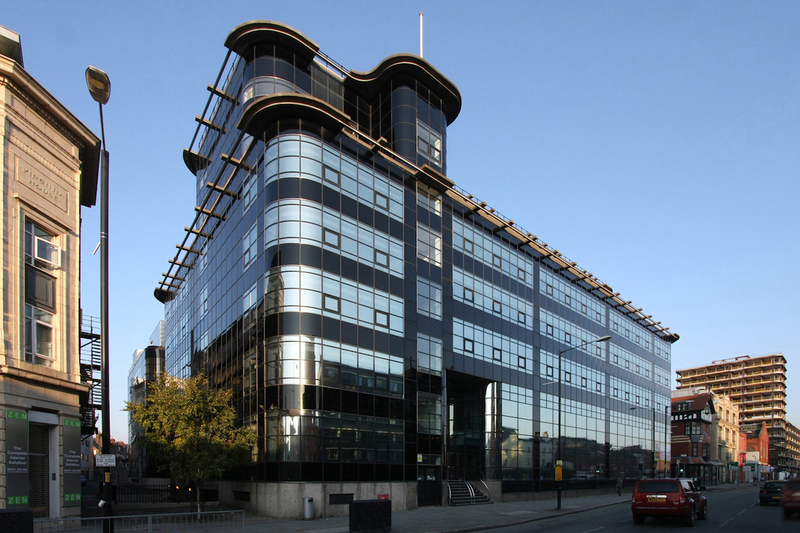
Turn left along George Leigh Street to Cornell Street, turn left and then right into Anita Street. The housing here is municipal from the 1890s. The street was originally called Sanitary Street after the Manchester and Salford Sanitary Association, but the residents preferred something less utilitarian, so they got an agreement whereby the ‘s’ and the ‘ry’ of sanitary were dropped.
Dominating the houses is Victoria Square, a slum replacement tenement of 1897 which originally featured 283 flats around a central courtyard. Now accommodation for the elderly, it failed in its purpose in 1897 as the rents were too high for the slum dwellers.

Turn right in front of Victoria Square on Sherratt Street and head for the church. This was St Peter’s from 1859 by Isaac Holden in the round arched Romanesque style. It has a beautiful lofty interior which has been reborn as the Hallé Orchestra’s rehearsal space. Look for concerts and gigs there. There is an extension by Stephenson Studio, now Stephenson Hamilton Risley Studio, that completes the Cutting Room Square which is an item of considered beauty and has been nationally recognised as such.
Turn right on Blossom Street to Cutting Room Square with its cotton bale benches and images of abandoned mill interiors. The artwork in the square comes from artist Dan Dubowitz who also created Peeps, a series of iron and brass metal spy holes scattered through Ancoats.
Facing the church, leave the square to the right onto Hood Street, turning right again into Murray Street passing between the canyons of factories to the Rochdale canal on Redhill Street. Turn and look back at the mills, renovated into offices, studios and apartments. You’ve just passed the oldest, Murray’s Mill of 1798, with the most recent, Royal Mill from 1911-13, on the right towards the city centre.
French writer Alexis de Toqueville commented in the 1830s about the largest here, owned by McConnel and Kennedy: ‘1,500 workers labouring 69 hours a week…three quarters of the workers in (the) factory are women and children.’ This was Manchester as ‘shock city of the age’. To visitors the scale of the new industrial processes was beyond their range of experience. ‘Here are buildings seven to eight storeys, as high and as big as the Royal Palace in Berlin,’ said the German architect Schinkel in 1825.

Walk down Redhill Street to Great Ancoats Street and turn right. Close to the junction with Jersey Street is Maurice Shapero’s remarkable 2012 building for charity 42nd Street. White steel gates at the front, and brushed aluminium round the back on Pickford Street, should you wish to stroll round.
The neighbour building on the corner with Jersey Street is dedicated to Thomas Horsfall. Ancoats was a tough but energetic working class area of the city. Thomas Coglan Horsfall was middle-class and wore his heart and conscience prominently on his sleeve.
The son of a wealthy textile merchant and a partner in the business, Horsfall’s ill-health and his deep Christianity took him in the direction of philanthropy. Ancoats, he thought, was perfect for his project to bring beauty into the lives of those who were denied it – whether they wanted art or not. In this he was following the principles of his hero, John Ruskin. The great art critic responded to all the Horsfall love by writing a forward to one of Horsfall’s many books and pamphlets entitled The Study of Beauty. Horsfall opened an art museum which became permanent in 1886, it closed in 1953.

As one writer has noted: ‘When the Art Museum opened its rooms, variously dedicated to painting, sculpture, architecture and domestic arts, together attempted to provide a chronological narrative of art, with detailed notes, labels and accompanying pamphlets and, not infrequently personal guidance, all underlining a sense of historical development.
The Museum boasted a Model Workmen’s Room and a Model Dwellings’ Sitting Room, which spawned craft classes in woodwork and drawing, and paintings of nearby beauty spots. This breathed, an albeit short, life into an associated rambling club. Free music, lectures and entertainments on weekday evenings and Sunday afternoons proved popular, as did children’s concerts and readings. From 1892, a new concert hall was built to hold 600 people, and visitors steadily increased throughout its first decade.’
Turn round and return to the Great Ancoats Street canal bridge. Turn immediately left over the bridge and follow the path down to the towpath and turn left under the bridge onto the Rochdale Canal.
On the far side of the canal on the right is Brownsfield Mill from 1825, now flats. In 1909 webbing manufacturer Humphrey Roe went into partnership with his younger brother, Alliot, in this building. He allowed the latter to use part of the building as Britain’s first aeroplane factory, making planes in kit form before being assembled for flight elsewhere.
A V Roe’s efforts would eventually prove very successful and result in the AVRO aeroplane company which in turn would produce machines such as the Lancaster and Vulcan bombers. Humphrey meanwhile, the far more engaging of the siblings, would marry Marie Stopes and encourage and support her in setting up Britain’s first birth control clinic. This was a progressive initiative, so it's a shame Stopes was a thoroughly unattractive character, an anti-semitic eugenicist who mocked and humiliated her affable husband and wrote letters of support to Adolf Hitler.
It was also in this building where artist LS Lowry worked from 1912 to 1952 in the least artistic employment ever conceived. He was a rent-collector for the Pall Mall Properties.
Continue down the tow path to the first footbridge and cross over the canal. At the crest of the bridge there’s a view of buildings and a surface car park. That car park was once all water and part of the inland port created by the junction of Rochdale Canal and Ashton Canal. The latter was a narrow canal and the first section was completed in 1797. One of its pioneering features lies a very short walk away down its length. This is Store Street Aqueduct, designed by acclaimed engineer Benjamin Outram. With its 45 degree skew, it is the first major such structure in Britain and the oldest still in use today.
Continue down the bridge and turn left across the car park to the large arched gate. Part way across you pass the site of a company called The Donkey Brand. This business produced donkey stones in a mill in Ashton-under-Lyne down the canal. Donkey stones were an aggregate of pulverised stones, bleach powder, cement and water and were used by every proud housewife on every terraced street to add lustre to their doorsteps.
Over the canal is architectural practice BDP’s splendid, self-designed, Manchester offices from the 1990s. Meanwhile, on the right, note the handsome white tiled former textile warehouse. The grid of this warehouse is an early example of Modernist Movement architecture in the city.
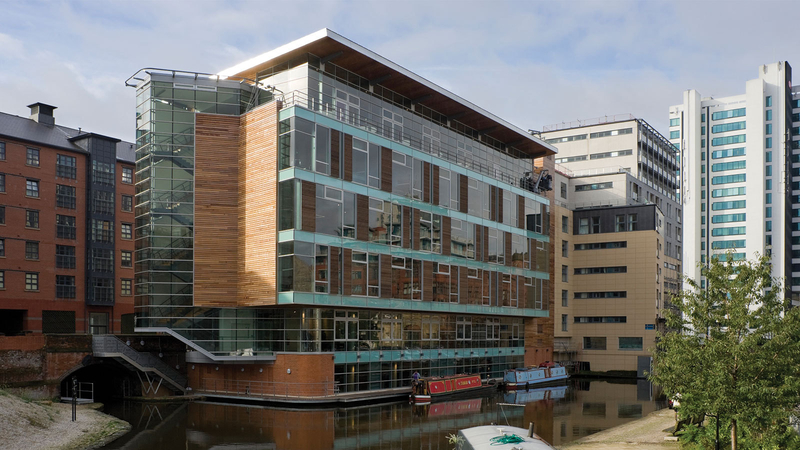
The stone building to the right of the arched gateway is the stone-built four storey warehouse, Carver’s Warehouse, from 1806 for the Rochdale Canal Company. This has two shipping arches at ground level which once opened into the water of the canal so goods could be processed directly into boats. Hidden inside is a surviving water wheel previously used to power pulleys for lifting goods between the levels. This is the earliest surviving canal warehouse in the city and one of the oldest in the country, even though now it has been left high and dry.
Walk under the 1822 gateway, which was the entrance to the canal basin, and turn right onto Dale Street. Dale Street is a classic textile warehouse street with some fine examples such as the terracotta Langley Buildings on the right hand side from 1909 by R Argile.
Because of the consistency of the warehouse architecture, which has now become domestic or commercial, Dale Street has frequently been used as a film set. The most elaborate transformation was in 2011 for the Marvel movie, Captain America: The First Avenger, when Dale Street became Manhattan of the 1940s. This featured Chris Evans as Captain America and Haley Atwell as Peggy Carter.
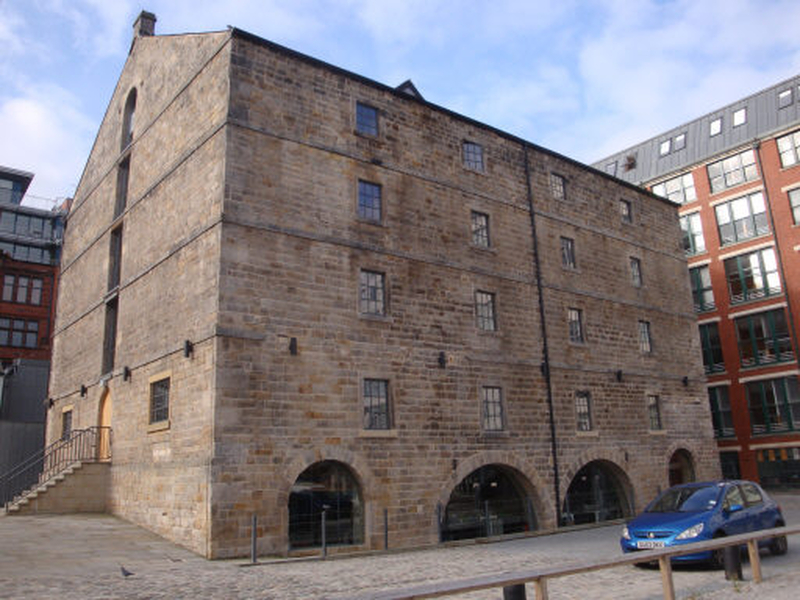
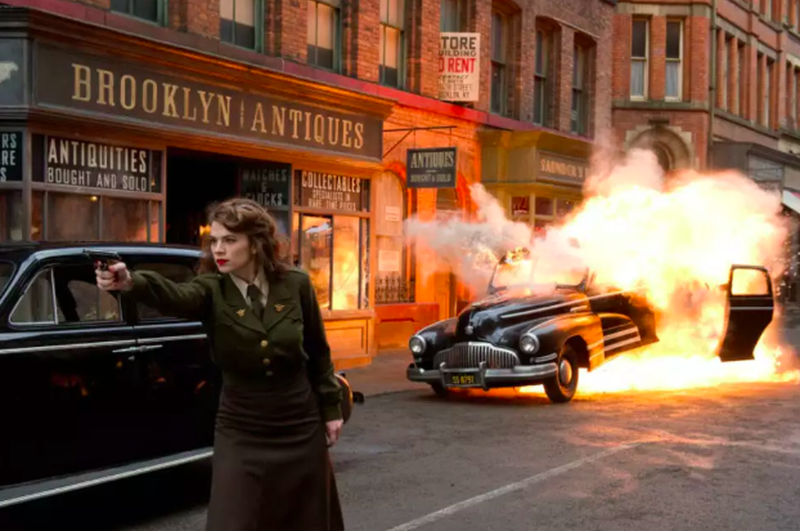
Turn right on Tariff Street and then left on Hilton Street. The range of low buildings on the right that follow the street and continue round the corner into Port Street is first generation Northern Quarter. These low 18th century buildings of two and three storeys with the cellars underneath would have been the first to have been built on farm fields. For a generation the whole area would have looked similar to this. The buildings include long rows of workshop windows to provide light for members of a family to create work as part of the domestic system of early industry.
Continue along Hilton Street, cross over Newton Street and turn right taking the second left, Faraday Street. The building on the corner here is the free to enter Greater Manchester Police Museum, a smallish building for a branch police station, dating from 1879 and open on Tuesdays it's worth a visit for original features such as the cells.
Turn immediately left down the tiny Little Lever Street to view a mural called Serenity by artist duo SNIK. This represents the Suffragette movement and the campaign for Votes for Women (discussed in the first part of this walk), which held meetings in Stevenson Square.
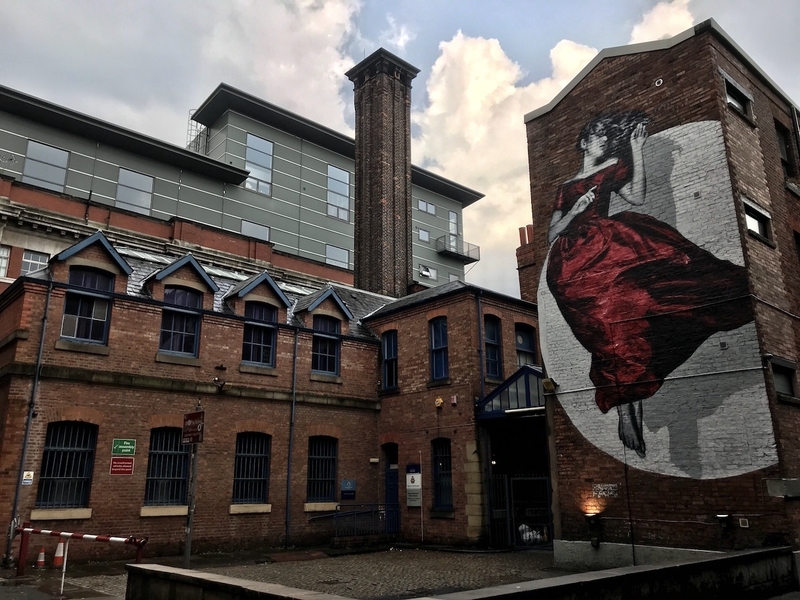
Northern Quarter Public Art
It started off in the eighties with Afflecks and its artworks then it spread. The dense network of streets in this part of the city provided a perfect canvas for public art and locals Wendy Jones and Liam Curtin from Majolica Works saw this and inspired others to see it too. The north/south and east/west street signs weaving a warp and weft in a city that rose through textiles are the classic examples of their work.
Light tower by Peter Freeman on top of Church Street car park is one of that first generation of artworks that is immensely rewarding. It lives up to its name. At the opposite end of the scale Mr Smith’s Dream by Liz Scrine on the Copperas Street side of Manchester Craft and Design Centre provides a clever arty distraction referring to a famous pet shop and its owner which occupied a site close by.
Recently the Cities of Hope project has vastly added to the art on show bringing whole gable ends of work to appreciate. This is art as politics. Raja from Cities of Hope said: “We emailed the world’s leading street artists...and every single one replied, because they believe in using art as a social justice tool. Art doesn’t just have to be in the museums and galleries they pump with millions of pounds. The idea eventually is to fill the Northern Quarter with thought-provoking art, each piece leading you to the next: an immersive outdoor gallery in the heart of Manchester.”
Continue into Stevenson Square, turn right and then left along Lever Street. Sir Ashton Lever was from Alkrington Hall, in Middleton, a little north of Manchester but with considerable property in the city. He was a man ruined by collecting. This began as a child with seashells but then he just couldn’t stop, gathering immense amounts of natural objects plus live animals. His collection became nationally famous and he opened it to the public in 1766.
An enthusiast in everything he did, he was a keen archer and central to several archery clubs, becoming president of the national society of archers. In 1775 he opened his Holophusicon in London. The name refers to a natural history museum but really this was a chaotic and vast cabinet of curiosities with 28,000 exhibits. It was sufficiently impressive to attract the attention of the explorer Captain James Cook who contributed to the museum with specimens from his voyages.

Collecting made Lever bankrupt. He asked the British Museum and the Empress of Russi to buy it but they declined. He then desperately tried to dispose of it through a lottery. 8,000 tickets were sold at a guinea each, but Lever had wanted 36,000 ticket sales. The problem for the punters was where could any winner store the collection? James Parkinson triumphed, but later put the collection up for auction in 1806. It was dispersed after a sale lasting 65 days.
As for Lever, he died of chill in 1788 but not before selling off his Manchester properties, as described earlier in this walk. Some reports hint at a darker end, that as a broken man he poisoned himself in the Bull’s Head pub in Manchester.
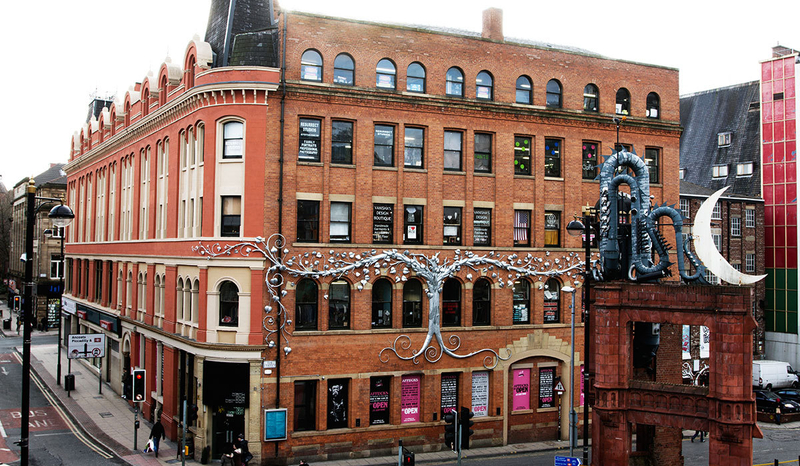
Turn right on Dale Street to Oldham Street. Oldham Street is not named because it joins with Oldham Road and leads to the town of the same name. It’s named for Adam Oldham who had a residence where the street lies. Oldham was a prominent Methodist and close personal friend of John Wesley. When he built a chapel on the street named after him in 1781, Wesley attended. This was rebuilt as Central Hall in 1885, designed by George Woodhouse. It looks anything like a church and stands at the left hand side of the junction with Oldham Street with commercial units on its lower floors. The entrance is on Oldham Street.
Cross straight over Oldham Road and Dale Street becomes Church Street. On the left is Afflecks Palace, the indie bazaar of crazy boutiques, and on the right is the Smithfield Buildings. Both these buildings were originally components of one of Manchester’s most upmarket department stores, Affleck & Brown.
Affleck’s is famous, on its Tib Street elevation, for its mosaics by Mark Kennedy referring to Manchester life, art and people. Continue down Church Street to the Unicorn pub which has a classic 1920s interior from the days when this was a market area. The Castle on Oldham Street and the Hare and Hounds on Shudehill have equally interesting period interiors.
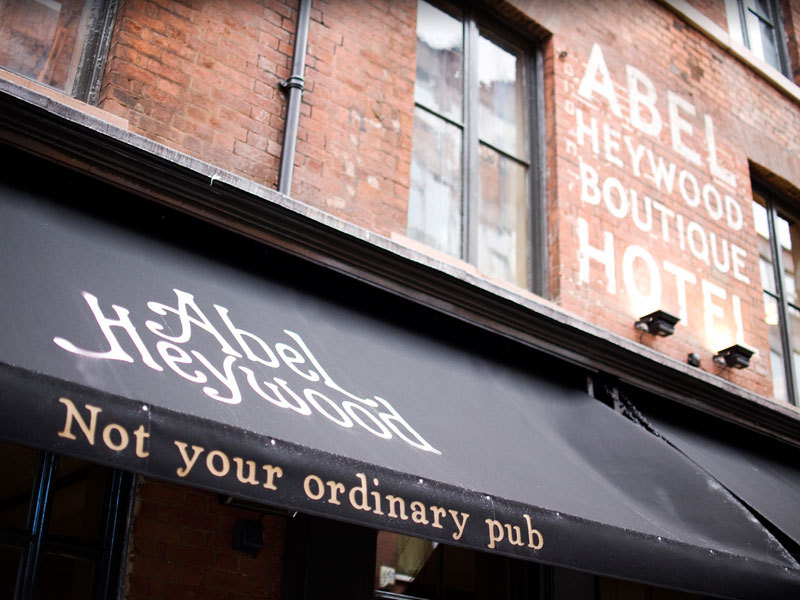
Cross Church Street, opposite the Unicorn, to Red Lion Street and walk to the Abel Heywood pub, a new pub in an older building from Manchester brewer Hydes. Abel Heywood was a key Manchester character, printer, campaigner, mayor who oversaw the building of Manchester Town Hall. The hour bell of the later is named for him as ‘Great Abel’. There never has been a better name for ‘a bell’.
Turn left on Back Turner Street, just over the road is Kelvin Street where a number of workshop houses have been reconstructed with the distinctive top row of windows to let in light.
Follow Back Turner Street to High Street and turn right on Thomas Street. The building hosting Bluu bar and the Centre for Chinese Contemporary Arts, on the north side of the street, is the former Market Offices by Travis and Mangnall from 1877. The Centre for Chinese Contemporary Art was established in 1986 by a group of British Chinese artists based in Manchester. It comprises a gallery, education room, a tea house and strong exhibitions from artists with Chinese cultural connections from across the globe.
Before the markets were formalised Manchester had a network of ramshackle and informal market spaces. One was close to the junction of Thomas Street and Shudehill. At the coronation of George IV the authorities decided to reward the population at several locations across Manchester with food and drink. This involved 25 oxen, 60 sheep, 20,000 lbs of bread and 400 barrels of strong beer. This act of largesse spectacularly backfired.
This is the report from the Manchester Guardian the day after. The journalist completely loses his reportage and can’t help offering an appalled opinion.
‘At the New Market, Shudehill, the meat and loaves were thrown out high from the doors and windows of the warehouse where they had been stored; the populace scrambling for them as they could. It resembled the throwing of goods out of the windows of a warehouse on fire rather than anything else we can compare it to. There was shameful waste and general confusion. At an early hour the stage erected for the applicants to stand upon gave way, and one person was killed and several dangerously wounded by the fall.

‘When the liquor was distributing we saw whole pitchers thrown indiscriminately among the crowd men holding up their hats to receive drink; people quarrelling and fighting for the possession of a jug; the strong taking liquor from the weak; boys and girls, men and women, in a condition of beastly drunkenness, staggering before the depository of ale or lying prostrate on the ground under every variety of circumstance and in every degree of exposure, swearing, groaning, vomiting, but calling for more liquor when they could not stand or even sit to drink it.
'Every kind of excess, indeed, which the most fertile imagination can conceive or the most graphic pen describe was there witnessed in nauseous and loathsome extravagance. Never did we see, and we hope to God never again shall see, human nature so degraded. As to the distribution of meat and liquor, there are two or three lives lost and fourteen patients in the Infirmary, several of them dangerously injured.’
The moral is clear: don’t give away beer. There are 288 pints in a standard UK barrel. Thus the town authorities gave away 115,200 pints of strong beer. The total population at the 1821 census of the Manchester township was under 103,000, man, woman and child. They seemed surprised there was trouble.







